From what I've noticed (and I'm sure you've noticed too), when it comes to some of the most notable figures in history, there seems to be this odd pattern: people who were not even close to being appreciated for their genius during their lifetimes only achieve great popularity after their death. This is the case for figures like Van Gogh, Galilei, Poe, and Caspar David Friedrich. Yet, there is one case that, to this day, has always perplexed me.
The 18th century painter Angelica Kauffman (yes, a female artist in the male-dominated art world) went from being not only known but incredibly popular in Italy and England, celebrated in her time, only to be completely forgotten in the centuries that followed…
Angelica Kauffman was born on October 30, 1741, in Switzerland. Her introduction to the world of painting was largely due to her father, who worked as a muralist. Back then, for a woman to enter the field of painting was nearly impossible unless she had a male relative who could mentor her, a chance that Kauffman had. She began working alongside her father as his assistant at a young age, and by 1752, she moved with him and her mother to Italy. During their time there, Kauffman was taught art, music, and languages by her parents. It was in Italy that she painted her very first self-portrait
Now, it’s not the most technically perfect self-portrait, the bow lacks accurate perspective, and her hands are oddly placed on the music sheet. But here’s the thing: she was only 12 years old! And for a child that young, it was nothing short of absolutely remarkable. She was already considered a prodigy. Her self-portraits would soon enough one of the most amazing pieces of her work.
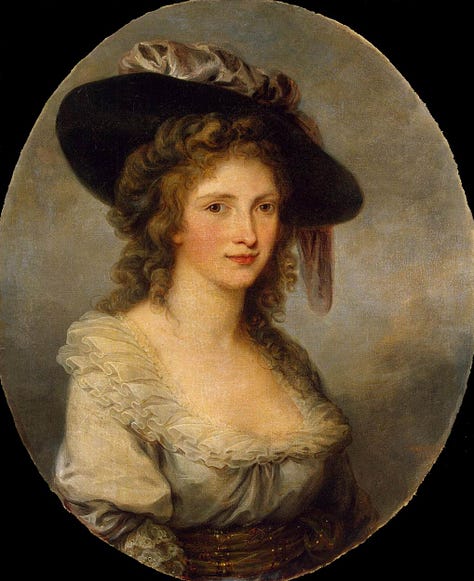


Her career truly began to take shape as she traveled across Germany, Austria, and Italy, securing commissions from bishops, aristocrats, and even some of the most influential figures of her time, renowned art historian Johann Joachim Winckelmann, the King of Naples, and the famous actor David Garrick. Her portrait of Garrick remains one of her most famous work of that period.
Before graduating from the Accademia di Disegno in 1762, Kauffman was honoured with the title of Honorary Member of the Academy of Fine Arts in Bologna. That same year, she was also inducted into the prestigious Accademia di San Luca in 1765.
Encouraged by Lady Wentworth, wife of a British ambassador, Kauffman moved to London to further her career. In 1766, she met the famous Joshua Reynolds, the leading portraitist of the time, and the two became close friends (and perhaps even more, it's not entirely clear). As you can see, they painted portraits of one another. Their friendship allowed Kauffman to enter the most prestigious art circles, and soon enough, she was shining just as brightly in London as she had in Italy, if not more.

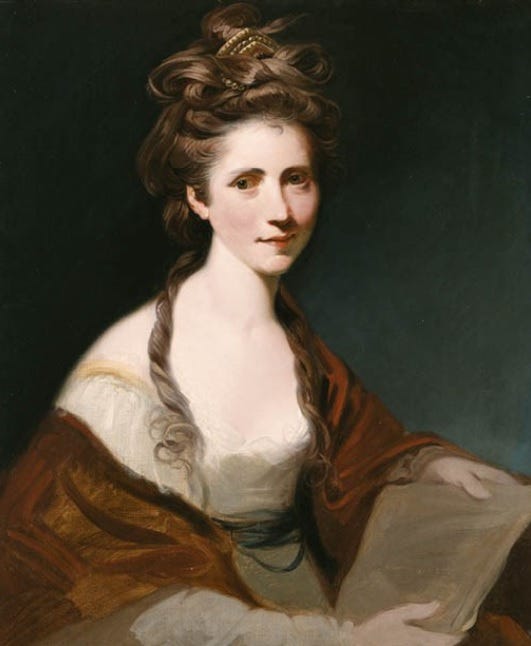
By the time she arrived in London, Kauffman quickly established herself as a highly sought-after portraitist. In 1767, she painted a commission for the Duchess of Brunswick and her son, which gained a lot of popularity, to the point where people would have killed to own a Kauffman portrait. She also had the support of some very influential patrons, including Princess Augusta Charlotte of Hanover, the mother of King George III, and Queen Charlotte of Mecklenburg-Strelitz.
In the 1780s a contemporary of Kauffman remarked
The whole world has gone Angelica-mad
In 1768 she became one of the founding members of the Royal Academy of Arts in London, alongside one other woman, Mary Moser. I really want to stress on how groundbreaking that was for a woman. However, even though they were part of the Academy, their inclusion wasn’t exactly a sign of equality. The two women were not invited at meetings and dinners with their fellow members. After them, it took a whole century before a woman was nominated or elected as an Academician in the RA.
One notable painting by Johann Zoffany (1771–2), which depicts the founding members of the Royal Academy of Arts, does not feature Kauffman and Moser in the painting, at least not as living beings. Only their portraits appear in the upper right part of the painting. There’s a reason why they are not shown alongside the other artists. It’s because, as women, it was considered improper for them to participate in sessions with nude male models, and I think it was meant to show that the Royal Academy adhered to the codes of decency of that period.
Isn't that ironic? Female models could pose nude for male artists, but it was considered scandalous for a woman to attend a session where a male model did the same.
I feel like Zoffany could have chosen a different main action for the painting rather than nude models. He didn’t have to include them, so why not follow Henry Singleton’s example (1795) and include the two women? Go figure...
There’s something particularly striking about Zoffany’s painting when you look at the bottom-right corner. Someone (Richard Cosway to be exact) appears to be pressing down on a fragment of a female marble torso with his cane. Could this be a subtle comment from Zoffany on the way women were physically and metaphorically pushed aside in the art world?
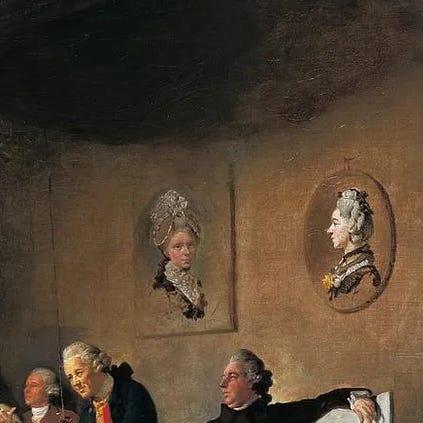

At heart, Kauffman was primarily a history painter, focusing on subjects drawn from classical history and mythology. She was heavily influenced by the early Neoclassical movement, and you can even see in her portraits her affinity for mythological painting. In a commission for the Earl of Gower and his family, you can see from the clothing and the composition’s movement the Neoclassical influences.
The thing with history painting is that the heroes are often men, so mastering male anatomy was essential, which was mostly done by studying nude models, something we know she couldn’t do. Instead, she had to study from sculptures and other paintings. Yet, her reputation would have taken a hit if she had demonstrated too much knowledge of male anatomy.
So what did she do? First, she focused on female heroines from classical and mythology. As the RA says, at 23 Kauffman painted Penelope waiting for her husband, Odysseus to return from the Trojan War.
Penelope was not a character who was frequently depicted in history paintings at the time, but Kauffman based many compositions around her story and other artists followed.
She also showed those female heroines in a way that were not if not never portrayed before. Look at A prime example is Rinaldo and Armida (1772) from an epic poem by Torquato Tasso. Without delving too deeply into the narrative, it serves as a strong representation of female power and male submission. Both of these works were painted during her time in London. Then, we have its counterpart, Gualtherius and Griselda (1772), which presents a more conventional depiction of male power and female submission.
Unfortunately, people weren’t really interested in her history paintings, so she continued doing commissions until her death. When Kauffmann passed away in 1807, her funeral was organized by the famous Antonio Canova, and a commemorative bust of her was placed in the Pantheon in Rome, next to that of Raphael.
Back to the initial question: Why was Kauffman forgotten? She was a literal celebrity in her time, a genius. Some say that Kauffman wasn’t the best painter out there, but it’s not a matter of being "better" or not. She was as talented as all the founding members of the Royal Academy or the Italian schools in which she was awarded. Even more than that, she had to work twice as hard in a career and a field that actively excluded women. She had an extraordinary ability to make social contacts and secure important patronage, she was a hell of a businesswoman. Kauffman’s paintings may not have been as "good" as others, but this was because she didn’t have the same access to male models to study from, yet, she still possessed immense talent.
I think it’s important to note that all institutions have (and still do) selective memories regarding those who changed history, memories that conveniently favour certain narratives over others. Even though it shouldn’t be the case, art is also political, and if your agenda didn’t match with the institution’s, you were meant to disappear. Yet, Kauffman’s case is such a strange one.


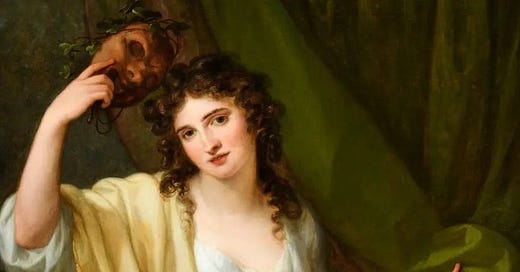


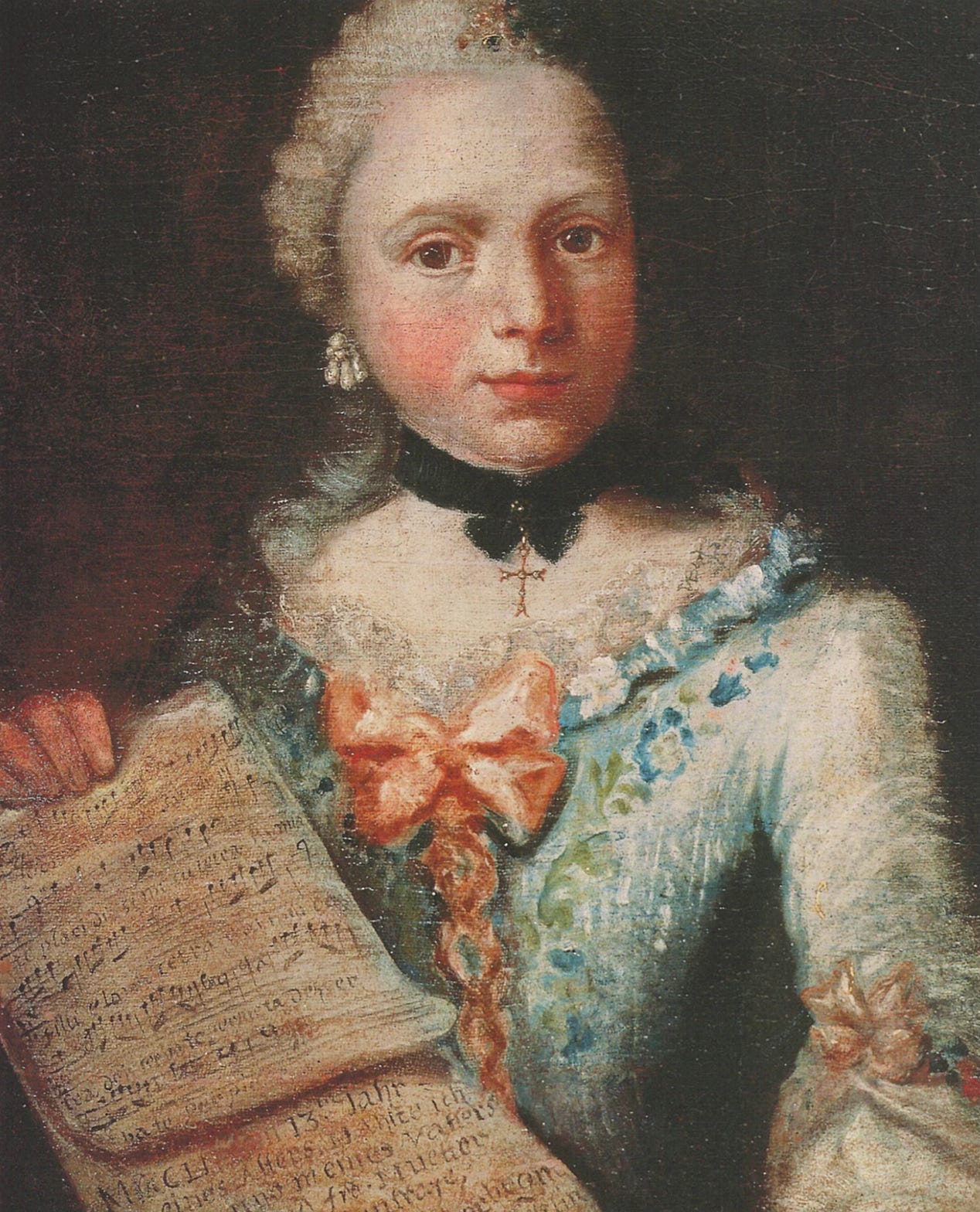
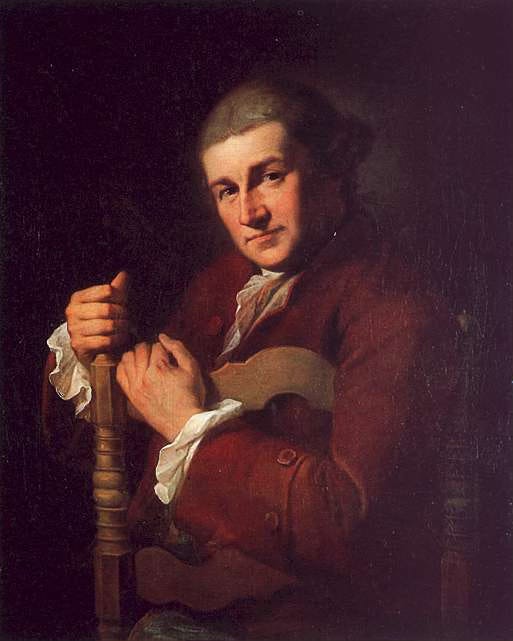

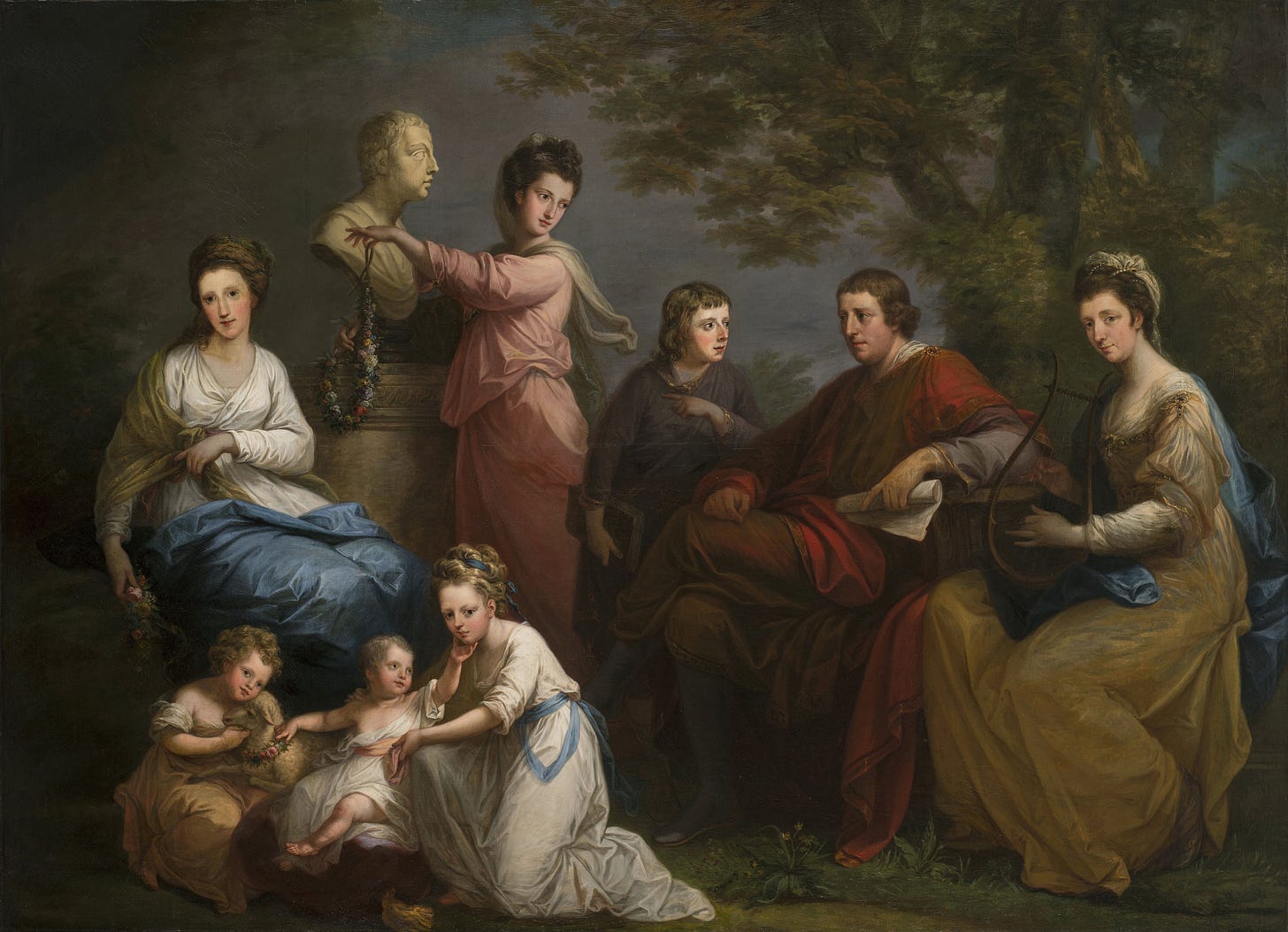
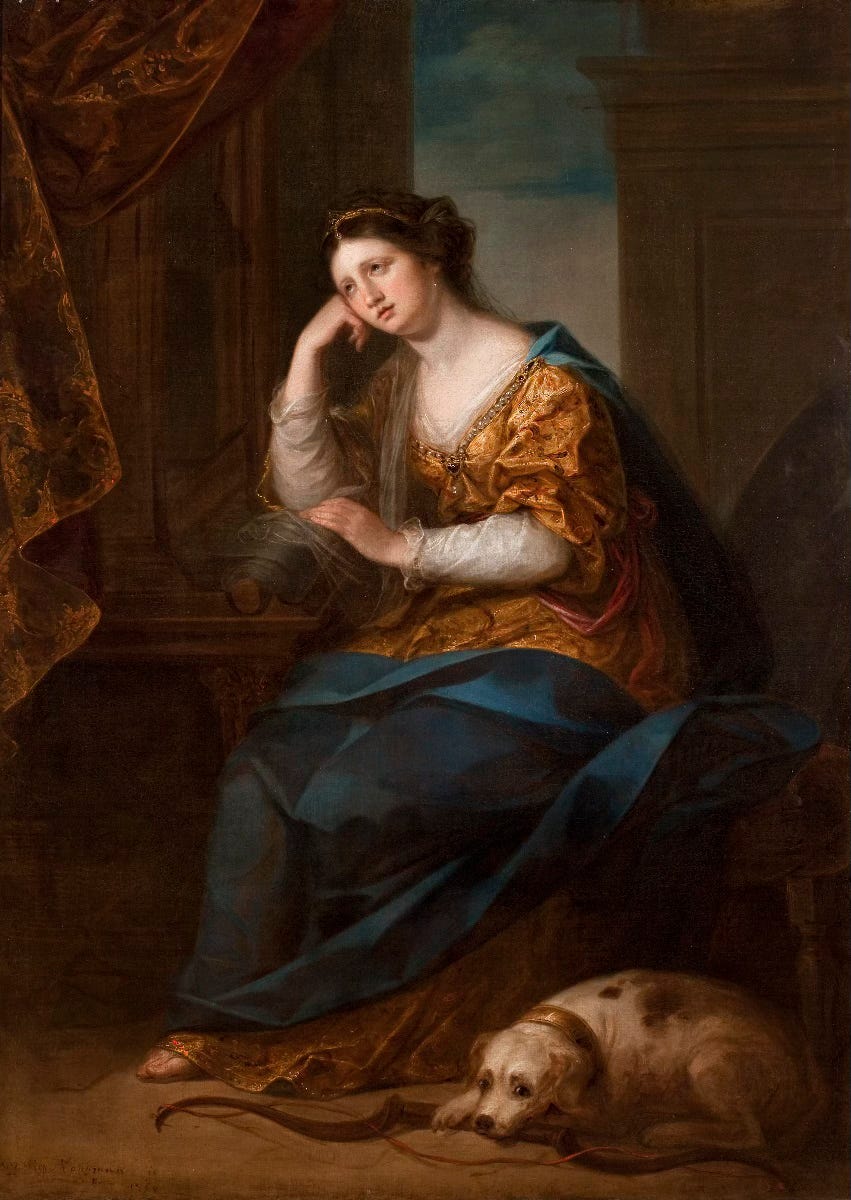


Perhaps the female body that Richard Cosway is using to prop up his (diminutive) form is that of his wife, Maria Hadfield Cosway. She was not a member of the RA, but her skills as an artist, musician and society hostess helped to ensure his success. Zoffany was known for making such little barbs in his conversation pieces.
so so intriguing and amazingly written as always!!! wild that she was such a talented painter at only twelve, and your comments on the contrasting privileges afforded to female and male artists is so interesting. i think it's so easy to forget that it was so easy for a woman to be scrutinised for just about anything back in the day, even if that was just the knowledge of male anatomy.